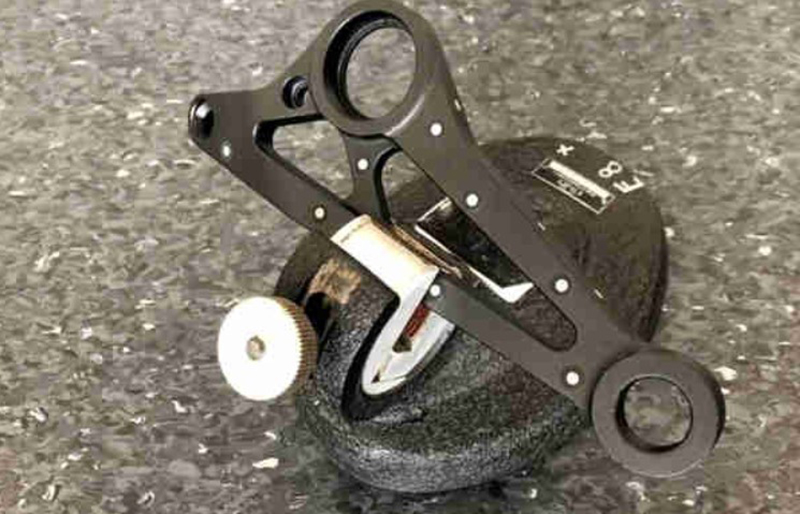Due to time constraints and demanding requirements, product development can be challenging from concept to market release. Industries are turning to 3D scanning technology to design new products to think ahead and build better products as quickly as possible.
Three-dimensional scanning is a powerful tool to incorporate existing designs, which allows designers and engineers to ensure that the design process is precise and more efficient, especially when there is no CAD model available.
3D scanner helps the product development of bikes
Recently, a well-known Czech bike producer LeaderFox start capturing 3D data for the development of new bike models using Scantech’s 3D scanner KSCAN-Magic.
The company has a wide range of products, from mountain, road, urban, trekking, e-bikes, to a few more special ones. The project is aimed at preparing 3D data for the development of a new bike model, specifically the connecting element of a cross-country bike.
This element is used to connect the rear shock absorber and the rear structure wheels, being attached to the seat tube. The design intent is to increase the riding comfort of the cyclist.

Challenges of the project
It is challenging to design a new element from scratch. Designing an ergonomic connecting element is more easily achieved by developing it from an existing product. To obtain the dimension of the element, traditional methods like measuring tapes are used. These methods are not efficient enough to serve for iterations, which increases time to market.
Thanks to the powerful capabilities of KSCAN-Magic, this handheld 3D scanner can can alleviate the challenges of product development by adding efficiency and reducing time to market.
In the following steps, we will show you how to develop a new model with the help of 3D scanning.

How to capture a 3D model for product development
Step 1: Marker placement
The time needed: 1 minute
Since we will be using a portable laser 3D scanner, we need first to place markers (reference points). It gives coordination to the scanning software to build a point cloud of scanned data in correct relative positions. There are two different sizes of makers in each package: 3 mm and 6 mm, respectively. Because we were scanning a relatively small part, we decided to use the smaller diameter and placed markers with the golden rule that at least 4 markers must be visible for a 3D scanner in the scanning field.

Step 2: Preparation and scanning with KSCAN Magic
The Time needed: 30 minutes
We first calibrated the 3D scanner with a calibration board and then started to scan. Scanning itself with a portable laser 3D scanner is a very fast process. The scanner move smoothly around the object to gradually collect data. The scanner must be moved so that data is scanned from multiple angles, for their completeness. Once data is complete, the object is placed in the next position or more positions to scan the remaining parts.
In this case, we used small reference points (3 mm) also on sides so we could move smoothly from the top side of the part to the bottom.

Step 3: Data post-processing in the scanning software
The time needed: 10 minutes
After scanning, the data is cleaned in our scanning software “ScanView”. All scanned data is then joined and then a check of the quality of the data and their completeness is recommended.
The last step is to generate the resulting 3D model. The result can be exported to common output mesh formats such as *.stl, *.ply, or to point cloud files such as .asc, .igs or, .txt. Specialized CAD software can then easily upload mesh files and generate 3D models.

Step 4: Measurement and reporting in the scanning software
The time needed: 15 minutes
The scanning and measuring software ScanView, which is included with KSCAN Magic, can directly perform CAD file comparison and generate a color map with a deviation report, which can be saved into PDF file. You can import CAD data that can be compared to scanned data by several methods, including setting up RPS points. It is also possible to create basic elements such as cylinder, point and line.

How 3D data can be used for product development
Bike manufacturers put great emphasis on quality, price, and speed of product development. 3D scanning is a new approach to eliminate the elements that lead to poor performance of the bicycles.
With the deviation report at hand, engineers can intuitively observe the deformation of the part after everyday uses. It serves as an insight to generate new ideas and combine existing solutions to come up new model.
By analyzing the data, they can get the answer to the following questions: What kind of materials can be used to ensure that the part is more lightweight and durable? How to improve the level of strength and stiffness? What methods can be used for manufacturing?
It helps the manufacturer to evaluate new concepts, balance and prioritize factors like weight, shape, and limits of the technical processes, and set target product specifications. In this way, they can produce bicycles that can better satisfy customer expectations.
Conclusion
The design of bicycles over the years has changed in a subtle way. The intricacies of design are focused on weight, performance, geometry, aesthetics, and materials. The design process aided by 3D scanning can help bicycle manufacturers to speed up the cycle time of product development, an efficient way to think ahead and follow new trends.
This content was first published on the Scantech3d website.

